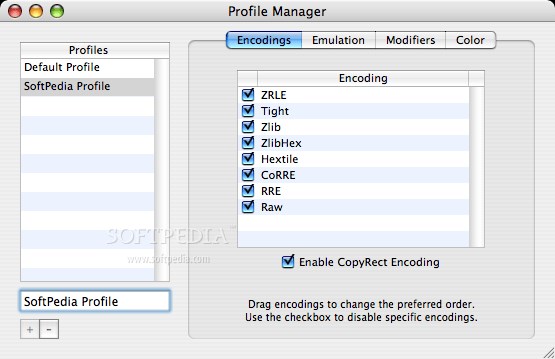

- #Chicken of the vnc for mac. mac os x
- #Chicken of the vnc for mac. plus
- #Chicken of the vnc for mac. windows
Keyboard Equivalents: Use this section to change the keyboard equivalents for various menu commands for different connection scenarios.The Connection menu's Special Keys submenu has several other commonly used keystrokes that are not found on Macintosh keyboards. You can see additional uses for the Function key on Apple's Laptop Technical Pages. Similarly, to send Alt-F4 on a laptop (where F4 is mapped to sound volume), you can use CMD-FN-F4. In the default configuration, you would use CTRL-CMD-FN-DELETE. On machines that don't have a DEL key (such as recent PowerBooks and iBooks), you can use the function key and the ordinary delete key. In the default configuration, this is CTRL-CMD-DEL (the CMD key is also referred to as the Apple key). If you'd prefer to type the keystroke, you can do this by simply hitting the keys that map to it. You can send this keystroke by choosing Send Ctrl-Alt-Del from the Connection menu's Special Keys submenu.
#Chicken of the vnc for mac. windows
Likewise, Windows machines commonly use the CTRL-ALT-DEL keystroke. You can force-quit applications on a remote Macintosh by sending the CMD-OPT-ESC keystroke from the Connection menu's Special Keys submenu. How 'Bout Command-Option-Escape, Control-Alt-Delete and Other Strange Combos? If you are lucky enough to have a two or three button mouse, you don't need to worry about emulation as Chicken of the VNC supports up to three mouse buttons, as well as scroll-wheels on compatible servers. If you don't wish to use mouse button emulation, you can set the No Emulation option. You can cancel emulation by waiting for it to timeout, or by pressing the Escape key on your keyboard. Once you've tapped the modifier key, the mouse cursor will change to indicate that a mouse click will be emulated. This is the behavior that was in previous versions of Chicken of the VNC, so you may already be accustomed to it. The Tap and Click option lets you emulate a button click by tappinga modifier key a single time and then clicking the mouse. For example, you can right-click at the current mouse position by tapping the Command key twice quickly. The Multi-Tap option lets you emulate a button click by tapping a particular modifier key quickly. For example, you can use this to imitate the familiar control-click paradigm used on your Macintosh. You can emulate a button click by holding down a modifier key while clicking your single button mouse using the Modifier Click emulation option. If you are one of those cursed with a single button mouse, you have many mouse button emulation options. You can also check RealVNC's web page for additional information on connection and configuring a VNC client.
#Chicken of the vnc for mac. mac os x
#Chicken of the vnc for mac. plus
The port number is 5900 plus the display number - in other words, display zero is port 5900, display one is port 5901, etc. If you're having problems connecting, you should make sure that the port that corresponds to your display number is not firewalled on either your computer or on the server machine. If you can't connect, you can try switching the display number between these two values. VNC server programs on Windows machines tend to default to display number 0, while older VNC servers on Mac OS X, such as OSXvnc version 0.7, tend to use display number 1. Display: The display number for the connection.You must be able to "ping" the host to connect to it. You may optionally specify a port number here by appending it with a colon (like :5900).

This can be either a DNS name (like ) or an IP address. Host: The host to which you wish to connect.Use the + and - buttons to add and remove servers. Servers: You can store commonly used servers in this section.


 0 kommentar(er)
0 kommentar(er)
